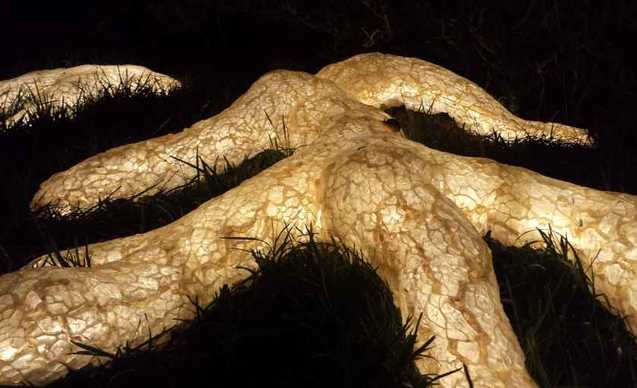Giovanna Lysy
Giovanna Lysy Memorie di luce
On Friday 23rd March at 6,30 pm the solo exhibition of the artist Giovanna Lysy will be inaugurated, in the evocative setting of the church of Santa Maria dei Servi in Città della Pieve.
The exhibition, presented by Ludovico Pratesi, brings together a series of works realized in the last ten years by the artist, which dialogue with the baroque space of the church, characterized by the wooden choir and the sacristy closet, both realized in 1628 by Giuseppe di Francesco Bendini di Montepulciano, in addition to the Deposition of the Cross, fresco attributed to Perugino and dated 1517.
Within this precious environment Giovanna Lysy has placed her luminous sculptures, which relate with stuccos and frescoes in a silent and punctual manner, in a subtle interplay of references between symbols, shapes and materials.
"Each work stems from an expressive need - Ludovico Prates writes - corresponds to a precise urgency that becomes shape and light: Stalactite tells us the violence of the public in the private, Tracks is the trace of the tractor in the plowed fields to represent the will of the man to bend the nature to his own purposes through a patient and tenacious activity, while the raft (Vela) is a symbolic image that reminds us of the solitude of the individual in the digital age, the commitment to reduce one's own needs at the minimum to survive ".
"The theme of roots seen as a continuous movement of populations in search of stability - adds the artist - or intended as individual research of its history, but above all to dig under the layer of superficiality created by the impetuous vortex of the earth, offers us not only a current topic, but above all, with the help of night light, it allows us to rediscover and relive that now forgotten emotion typical of childhood, in which magic and reality have no boundary ".
Short biographical notes
Giovanna Lysy was born in Rome but has lived a long time in the family home, the La Foce villa in the heart of Val d'Orcia, where her maternal grandparents lived, Antonio and Iris Origo. The house, the garden designed by the English architect Cecil Pinsent, the countryside and the landscape have helped to shape his conscience as an artist.
